Everything You Need to Know About Orange Blossom Water
How to buy, store, and cook with this sweet, floral ingredient.
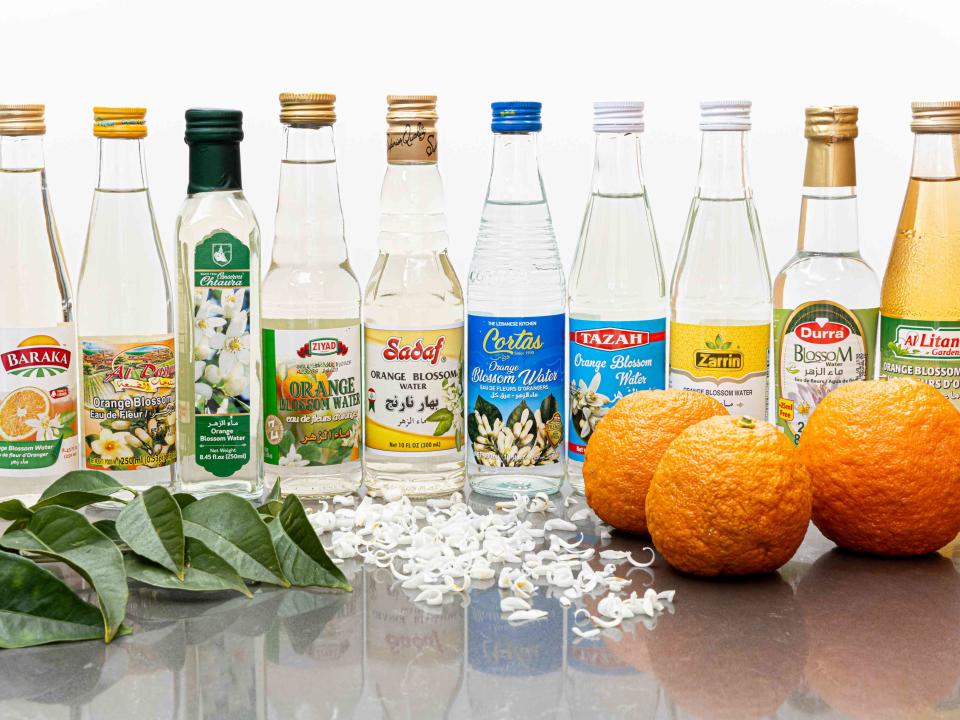
Serious Eats / Nader Mehravari
Orange Blossom Water
Description: Water distilled with the essence of flowers from bitter orange trees
Flavor profile: Fruity, floral, sweet, slightly bitter
Related cuisines: Middle Eastern, North African, and French
Storage: Lasts about a year when stored in a tightly sealed bottle in a cool, dark place
Open any bottle of orange blossom water and you’re likely to first think “that’s nice! Aromatherapy!” or “oh, wow. Perfume?” But make no mistake—this ingredient and its fruity, floral scent brings to life some of the sweetest, most beloved desserts.
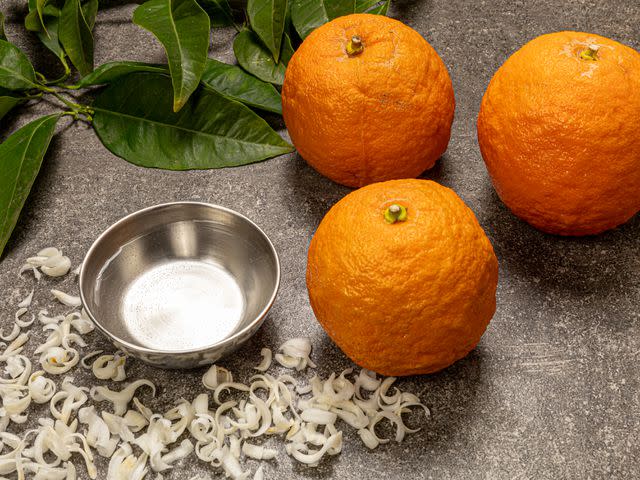
Serious Eats / Nader Nehravari
A cousin to rose water but not as widely known, orange blossom water is a powerful ingredient that is most prominently used in Middle Eastern and North African cuisines. We asked Nader Mehravari, Serious Eats contributor and Persian cooking expert, to walk us through the intricacies of the ingredient to learn more about what it is, how it’s made, and how to use it in the kitchen.
What Is Orange Blossom Water?
While orange extract is made from the orange fruit itself, orange blossom water is the essence captured from the flowers of the bitter orange tree (which are also referred to as Seville oranges, its name a nod to the Spanish city). “In spring, when the oranges bloom, the blossoms are collected [and] each blossom gives you four or five tiny petals,” says Mehravari, noting this process isn’t dissimilar from rose water’s distillation. “Those white petals are then typically boiled in water in a typical distillation process used to convert the aromatic steam that's coming from the boiling water into orange blossom water.” Seville oranges are not often grown industrially in the US—although Mehravari has his own tree in his backyard in southern California—so most orange blossom water sold here is imported.
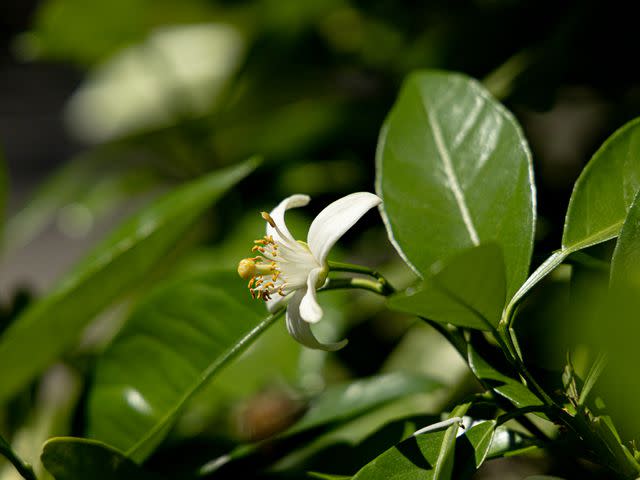
Serious Eats / Nader Mehravari
Many believe that Seville oranges originated in Spain, but they likely hail from Southeast Asia. They were brought to the Middle East and North Africa, and then introduced in Spain by Moorish invaders in the 8th century. Orange blossom water was likely used in perfumes and for medicinal purposes before it was introduced as a culinary ingredient. “Since orange blossom water is harder to produce, more expensive, and less available [than rose water], it wasn't used for culinary purposes as much,” he says. “Most historical recipes and cookbooks talk about adding rose water. Orange blossom is usually a secondary substitute.”
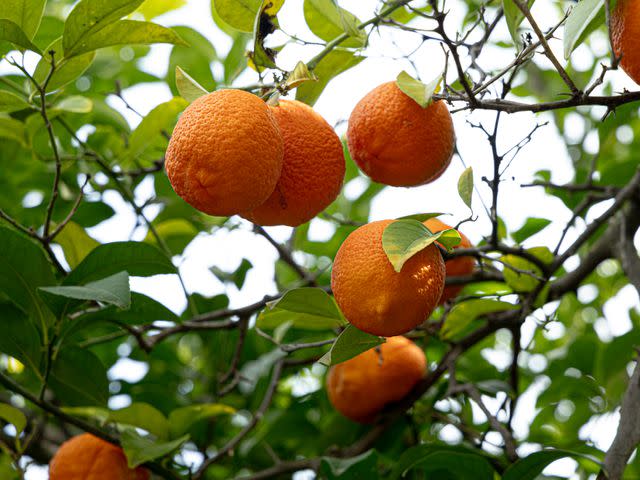
Serious Eats / Nader Mehravari
In addition to its sweeter aroma, the ingredient has a slightly bitter flavor that’s often the first noticeable note upon consumption. The water itself is a clear, slightly golden-tinged liquid.
How to Buy and Store Orange Blossom Water
Orange blossom water can be found at most Middle Eastern or international markets, as well as at specialty markets and online. You’ll often find it next to—wait for it—rose water. Some of the most popular orange blossom water brands include Cortas and Sadaf (Mehravari noted that he performed a taste test of a handful of popular brands, and these turned out to be his favorites, along with Golchin).
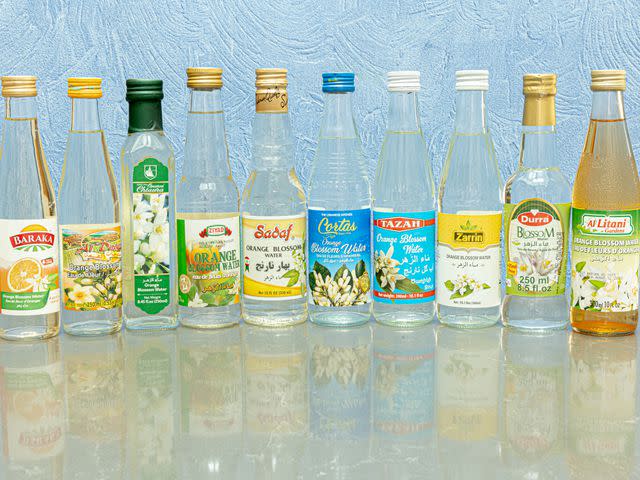
Serious Eats / Nader Mehravari
Though orange blossom water is made from bitter oranges, its scent should be as close to sweet oranges as possible. When determining the freshness of a bottle you’ve had laying around, you can peel a sweet orange, squeeze the peel, and then compare the scent to the water.
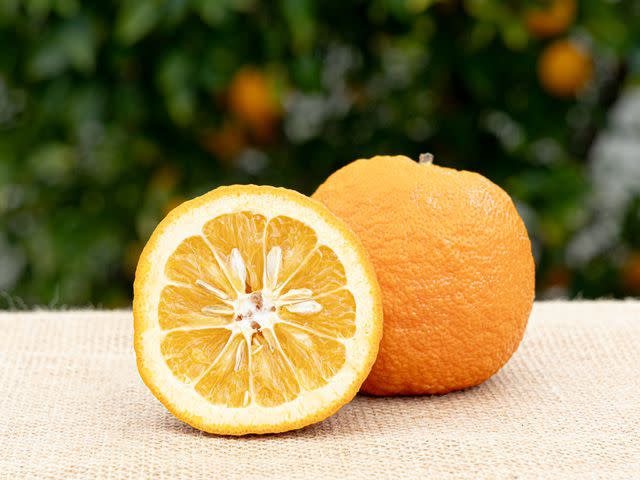
Serious Eats / Nader Mehravari
When storing, a bottle of orange blossom water should be tightly closed and, like many spices, tucked into a cool, dark place where it will last about a year before losing flavor. There’s no need to refrigerate the product.
How to Cook With Orange Blossom Water
Although orange blossom water is most commonly used in Middle Eastern and North African cuisines, it’s occasionally incorporated in French desserts such as gibassier, a breakfast pastry, and pompe à l'huile, an olive oil bread typically served around Christmas in Provence. The water is used more in sweet applications than savory. It is also often incorporated into desserts that feature a sweet syrup, like basbousa bel ashta, baklava, and kanafeh. Given its strong aroma and flavor, it’s best to start with small amounts, like half a teaspoon, then adjust accordingly.
While orange blossom water and rose water have different flavors, they are often used interchangeably, as they both offer floral notes to whatever they touch. While Mehravari’s recipes for sholeh-zard and fāloodeh both call for rose water, he notes that you can easily use orange blossom water instead—whether it’s all you have around or because you simply prefer the flavor.
Outside of French, North African, and Middle Eastern cuisines, Mehravari says orange blossom water pairs exceptionally well with chocolate. You can incorporate a small amount into any chocolate dessert of your choosing—think custards, brownies, and even ice cream. It also pairs well with nuts like pistachios and walnuts, as well as sweet, warm spices like cinnamon, cloves, and anise, and it’s particularly wonderful in many different pastry applications. The ingredient can also be used in beverages and cocktails to impart its fruity, floral flavor.
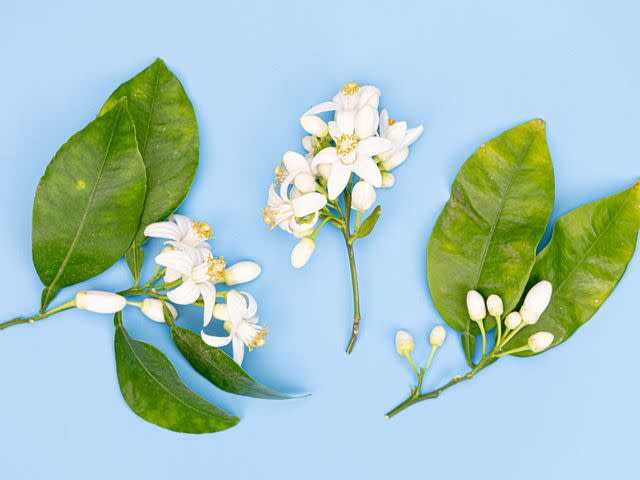
Serious Eats / Nader Mehravari
Once you become more familiar with orange blossom water, it might just end up replacing rose water in your pantry. Or, if you’re anything like Mehravari, you might end up storing them side by side and learning to appreciate them both equally.
Read the original article on Serious Eats.

